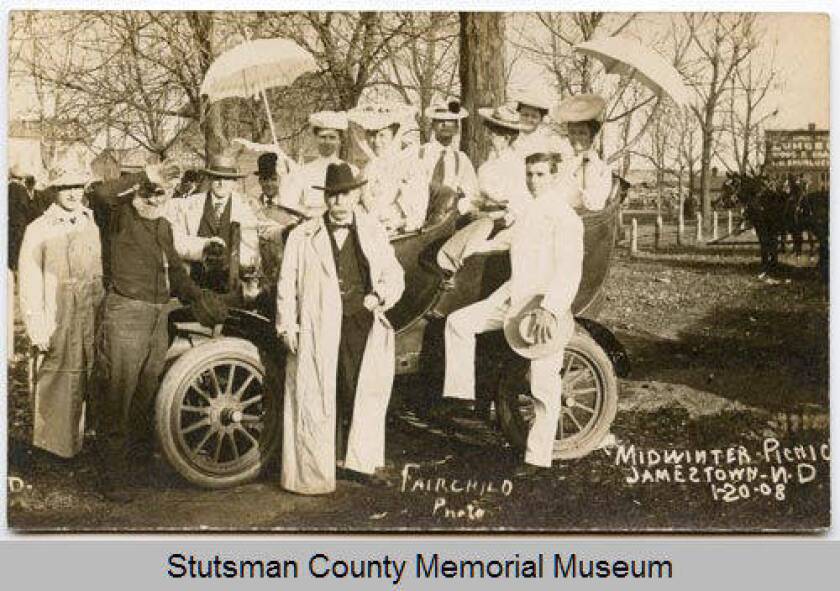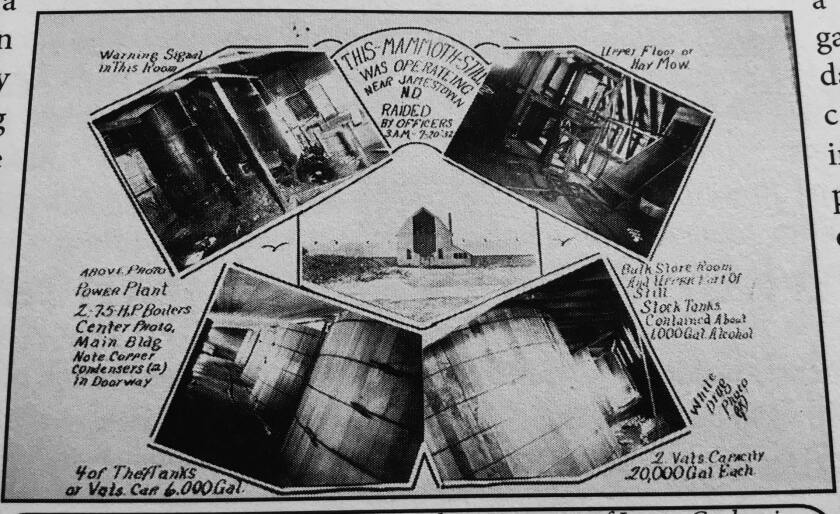Listen to the story:
JAMESTOWN, N.D – By all accounts, Oscar J. Seiler was a pillar of the Jamestown community at the turn of the 20th century. Not only was he the city attorney, he was a man about town. He helped organize and run community events, including something called “The Midwinter Picnics,” which attracted thousands of people to socialize and celebrate, even in the darkest days of winter.

ADVERTISEMENT
In 1922, perhaps because of his enthusiasm and vision, he was heavily recruited to become governor, as the sitting governor considered filling an empty U.S. Senate seat. Seiler was an impressive man. However, just 10 years later, he was at the heart of one of the biggest scandals of the Prohibition era. FBI agents found one of the largest illegal alcohol operations in the nation on his farm.
What happened? Did this prominent man profit from the illegal liquor business or was he completely in the dark? And just exactly how big was this operation?
'The noble experiment'
Dubbed “the noble experiment," a constitutional measure prohibiting the production, distribution, importation and sale of alcohol was undertaken to reduce crime and corruption, solve social problems, reduce the tax burden created by prisons and poorhouses, and improve health and hygiene in America. But by most accounts, the Prohibition "experiment" from 1920 to 1933 was a failure.
While consumption of alcohol dropped in the earliest days of Prohibition, it’s very clear people — barkeeps to booze lovers — began to figure out how to beat the system. Entrepreneurs found a way to produce and distribute illegal alcohol to serve people who liked to drink. Organized crime grew as producers needed protection from law enforcement. As a result, public officials became susceptible to corruption and started looking the other way for a cut of the moonshine profits.

But not everyone looked the other way. In the waning years of Prohibition, federal, state and local authorities still cracked down on the stills. But much of the time, the busts garnered little more than a few words in the local newspaper. Take, for example, this small clipping from The Bismarck Tribune from Jan. 9, 1932, which read, “Five gallons of moonshine whiskey, three barrels of mash, and a 10-gallon still were confiscated by authorities” at a Bismarck farm. That was typical – a fairly small raid. What wasn’t typical is what happened seven months later, 98 miles to the east.
ADVERTISEMENT

The ‘mammoth’ raid
In 1932, North Dakota’s deputy Prohibition commissioner, John Hagen, knew something was cooking – literally – in a stretch of land between Bismarck and Fargo. He told The Jamestown Sun, in a story published July 21, 1932, "We knew there was a still some place in this vicinity and have known it for some time. We traced a truckload of sugar from Valley City to Jamestown where it was lost and a truck load of pipe from Fargo to within three miles of Jamestown and it was lost."
The Department of Justice in St. Paul was brought into the case because of the suspected scale of the operation. They decided to check out the suspicious activities on a farm located five miles north of Jamestown and one mile west of Highway 20. It's not far from the current location of Masonic Park.
And they decided to do so in the dark of night. At 3 a.m., July 20, on an unseasonably hot day — even for July — Hagen and four federal agents came to the property and couldn’t believe what they saw – what newspaper headlines later heralded as a “mammoth” still. In fact, Hagen said it was more than likely the largest illegal liquor operation in the northwest and probably in the entire United States west of Chicago.
The agents found equipment worth $25,000 (almost $500,000 in today’s money). It was located just at the foot of the hill and housed in buildings that used to be cattle and sheep sheds, as well as hog houses. Huge vats stored the finished alcohol as well as the mash, the malted grain used to make alcohol. After days of counting vats and measuring capacity, agents determined the operation could store 100,000 gallons of mash and 1,000 gallons of alcohol. See the graphic below to get an idea of just how spectacular that is.
Hagen and the agents were gobsmacked to find such a huge operation on arguably one of the most beautiful farms and show places in Stutsman County. But they also pointed out that its location was perfect.
ADVERTISEMENT
"The spot is ideal for a thing of this kind. It is between highways number 20 on the east and number 281 on the west. It is off trail number 10 about five miles, nestled between hills with many trees around it and a layout that one would never suspect would be used for this purpose," Hagen said.
The agents also found an elaborate system of piping with all pumping done by steam pumps. The only manual labor necessary would be the lifting of sugar sacks from the floor to the top of the vats. The vats are open. Federal agents and Hagen also found tons of corn sugar in neat stacks and a quantity of petroleum coke on hand for use in the boilers.
What about the bootleggers?
The funny thing is, when Hagen and the Department of Justice agents arrived for the raid, they found the fires had been pulled out of the boilers, yet the place was steaming hot. There was no one in sight, like the place had been deserted just minutes earlier. Had someone tipped off the bootleggers about the impending raid? It appears so.
ADVERTISEMENT

The investigation into the operation went on for weeks. Agents took fingerprints and looked for clues. The biggest job was tearing down the equipment. Hundreds of Jamestown-area residents stopped by the property to watch as agents dismantled stills and emptied vats.
The only man arrested in connection with the operation was Frank Bronk, who lived in a small house on the farm, which he most likely shared with others. It’s unclear whether he spent any time in prison for the crime, but if he did, it doesn’t appear that he was imprisoned for long. Over the next few years, he is listed in Jamestown City Directories living free.
Authorities in St. Paul suspected that individuals from the Twin Cities might have been involved in the operation because much of the illegal booze appears to have been shipped and consumed there.
According to newspaper reports from late summer 1932, more arrests were expected, but it appears none were made (at least that Forum Communications could find on record). With Prohibition very clearly on its last legs, authorities might not have been motivated to spend much time searching for the bootleggers.

What about Oscar Seiler?
While Seiler, the owner of the land where the raid happened, was a prominent part of Jamestown life during the early 20th century, by 1923 he had moved from North Dakota to Long Beach, Calif., where he continued his successful legal career, becoming president of the Long Beach Bar Association and serving on the Board of Governors of the California State Bar Association. He was also active in the Kiwanis and Elks Clubs, as well as his local Presbyterian church.
ADVERTISEMENT
Perhaps his busy schedule meant he wasn’t able to keep close tabs with what was going on on the land he still owned back home in North Dakota. When federal agents informed Seiler that his farm was at the heart of a massive illegal alcohol operation, he came back to North Dakota and met with officials. Could he have been the mastermind of the operation? Authorities wanted to find out. When questioned, he was said to be “furious” and “embarrassed.” He also said he was a teetotaler. He was never charged in connection with the raid.
He died eight years later after a long illness – remembered as a highly respected lawyer who also happened to be part of one of the biggest prohibition raids in history.










